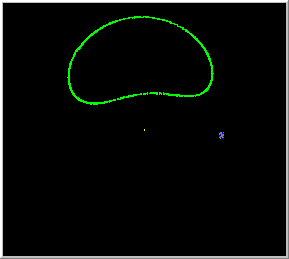Ynjevi wrote:tony873004 wrote:Like Jupiter, Earth and Mars are both known to have trojans that share their solar orbits.
Earth has no known trojans. Trojan asteroids are co-orbital asteroids that are located in L4 or L5 points, nowhere else. But there are some other Earth co-orbitals and quasi-satellites.
Cruithne, which is usually in a horseshoe orbit, sometimes fails to cross the L3 point. During these times, its path is around L4 or L5.
Notice in this rotating frame animated GIF that its path slows significantly at the L3 point, like trying to roll a ball over the top of a hill, it barely has enough energy to crest the hill. From time to time, the Earth's "repelling push" doesn't give Cruithne's kidney-beaned shaped orbit enough energy to crest the hill.
The reason for the differences is that Cruithne's orbit is inclined to Earth's orbit. This is why only one side of the kidney-bean shape seems to have repelling power. The other one, while it appears to come close to Earth, misses badly on the z-axis, and Earth's gravity is consequently weak on Cruithne at that point. Over long periods of time, the nodes of the axes precess, and the side with the "repelling power" switches. In between these two is a medium position where it is repelled, but not enough to clear the L3 point. Cruithne will then spend centuries orbiting as a trojan. The animated GIF won't show that since its just an 800 year simulation repeating over and over again, and not milleniums-long like it would need to be to show the described behavior.
But, you're right, since it is currently in horseshoe behavior.
